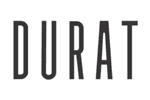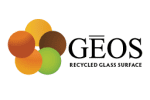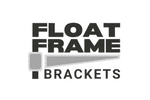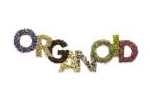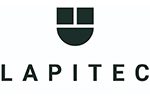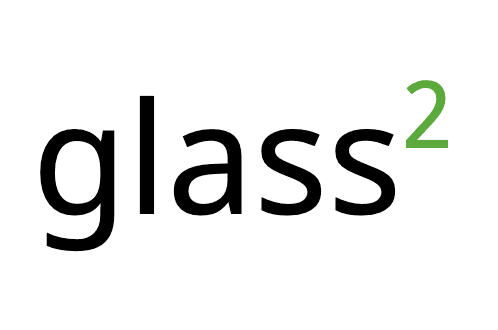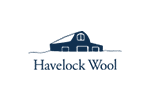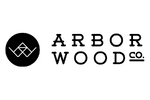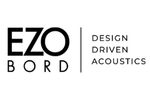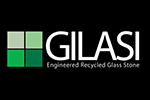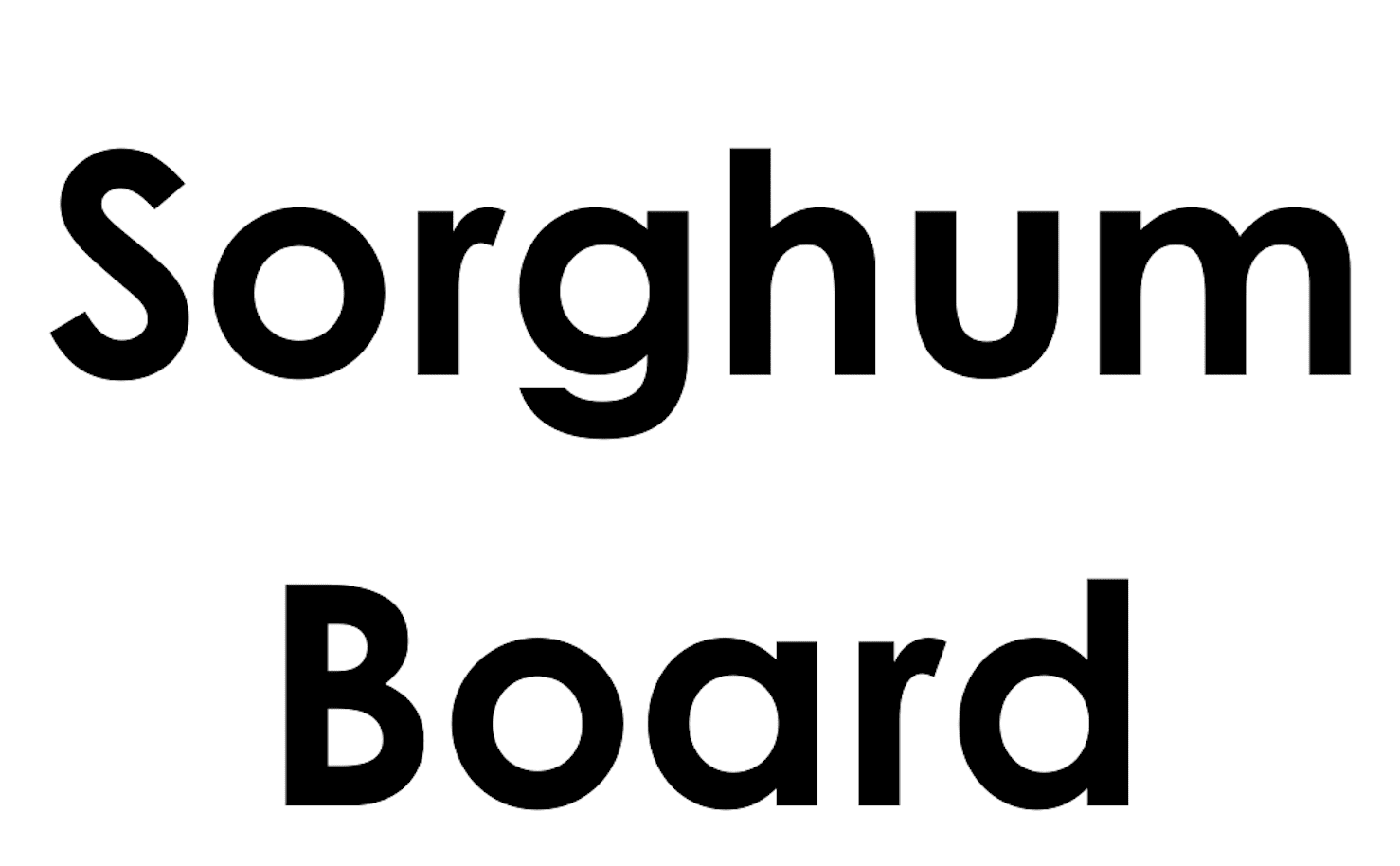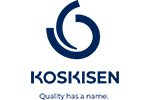Discover how you can green your life by building a knowledge base of current sustainable and eco savvy trends. This is Build Green Live Green.
In this episode, we will talk about green materials marketing. We are here today with JessicaMcNaughton of CaraGreen Beth PopNikolov and Zach Williams of Venveo.
JESSICA: Hi this is Jessica McNaughton with Build Green Live Green and we are really excited today to have our first guest speakers on our podcast, and today we have Zach Williams and Beth PopNikolov. Did I get it right?
BETH: Perfect.
JESSICA: Yes, with Venveo here and Venveo is a great company. We're super excited to be working with them. They have their own podcast which, Zach, I will let you introduce your podcast here. But we're going to be talking to them today about some of the work that they do, so, first Zach can you go ahead and just kind of give a quick intro of what Venveo is and talk a little bit about your podcast.
ZACH: Yeah absolutely. So, the podcast which, shameless plug, we just interviewed you, Jessica, is Smarter Building Materials Marketing. But we are a digital marketing agency that focuses specifically on the building products industry. We like to say that your online presence should be your best salesperson and we believe that that's really where the industry is headed. Not just e-commerce specifically, but how people research and find and choose products is changing and we want to be at the forefront of that and the manufacturers that we work with believe that same thing. And, you know, quite honestly, we're excited to be on the show today. Because I think a lot of your message around what changes and shifts are happening is a big reason why I think there's some good overlap and some good conversation to be had. So, we're really excited to join you on the show.
JESSICA: Well that's great. And, of course, you know, we're excited to have you guys. I think when CaraGreen started getting into some of the activities that we've started, when we started building our marketing team, SEO, and, you know, Instagram and what do you post and things like that, we had a lot of questions and we've been sort of trudging through and paving the way. And I always tell my team, “you guys are trailblazers. The building materials industry is not doing this, so you can't do it wrong because nobody's really doing it right.” And there's such a need for a company like Venveo to really help these manufacturers and partner with them and get them to do it right. We had a two-year learning curve to really figure out, you know, what SEO works and doesn't and trial and error and it cost a lot of time. And I’ve just after seeing you guys present at the Whizard Summit, last, you know, a couple weeks ago, it just made me realize how so many manufacturers could leapfrog that process by partnering with a company like Venveo. So, we're excited to have you on and kind of tap into some of your knowledge. So, given that I’m going to ask you a question related to that Whizard Summit, which was a really great experience for me. But, you know, Mark Mitchell is a LinkedIn trailblazer I guess, and he recently posted a pretty provocative article which had the title or referenced in the article, “old white guys,” and, you know, the “old white guys in building materials,” and we really see that as a mentality, which is kind of irrespective of gender. But how have you guys seen that mentality play out in the shift towards digital and online marketing? Is there a resistance to change that mental state kind of is prone to?
ZACH: Beth you want to take this one?
BETH: Sure, I’d love to talk about old white guys.
JESSICA: I'll take over when we start talking about young white guys.
BETH: Haha. It's actually been a really interesting time to be in digital marketing and building materials. I would say when Venveo started to really focus on the building materials space, about six or seven years ago, talking to building materials manufacturers about the importance of things like having an Instagram presence or being able to build your leads and sales through your website wasn't a foreign concept. But it was definitely a low priority and what we've seen in recent years is we're actually seeing more and more companies come to us to start that conversation versus us having such a huge burden of proof to explain to them the potential to grow their business, not just have a place that people can come and see their products but actually be able to increase leads and sales through a digital presence, and we've seen that increase more and more over the years. So, I can't say that I disagree with Mark, even though I disagree with Mark quite often. Yes, it's like a thing to disagree with Mark, it's a rite of passage. I agree with you that it's more of a mentality, doesn't necessarily have to pertain to one gender or age group or another. But I actually think, like I was saying, it's an exciting time to be in digital marketing in building materials, because it's really starting to catch fire. We're not so much convincing each individual at each level that this is an important thing, but they've seen the impact possibly in a competitor or maybe even in just an unrelated product category. And also, I think we've taken a turn to see that, yes, we market to architects or contractors, but people are being able just to see the shifts in consumers across the board and understand, you know, if Amazon can have the impact that it's having on the paper towel industry, why can't, I mean just as like a silly example, but why can't the building materials industry also be more connected and closer to the consumer and utilize digital in a more powerful way.
JESSICA: I think an important thing, you know, as you talk about digital marketing is where you're trying to drive people at the end of the day. So, you may have Instagram, you may have Facebook, and you're creating awareness of your product, but I think a lot of the efforts certainly that we put in place are to drive people to our website, which is kind of where all of our information sits. And you guys talk a lot about how the website is your most important sales person and that really resonated with me, because it's true. And I’d like to get a little more color around when you guys talk about that, what is the real pitch there behind it? Because I know it's true, but I’d like to hear in your words why it's true and, you know, how you've kind of built your business based on that premise.
ZACH: Well, I think if you look at like just consumer trends across the board, like we can look at data and we can say, “oh, well, you know, website and screen time is up and all those things.” But like if you think about like your phone, like it's your desk at work, it's your tv at home, like all the things that used to separate us and we used to spend our time on is now like the size of two and a half inches by five inches and it's always with us. And I think that if you think about how it can be your best salesperson, we also say it can be your best or it could be your worst, you just don't know it's your worst. But, the reason being is because technology today, it's- you have more opportunity to reach more people than you ever had before in the history of mankind. Like there has never been a better time for a company in building products to really double down and focus on a specific digital tactic. Because number one, as Beth, mentioned, not everyone's doing it. But secondarily, it's like where people are spending time online and you have the ability to use technology to your advantage. So, you can use email, you can use social media, you can use your website. All of those areas are where people are spending time and the friction or resistance to get into that market, it's so little. Whereas like 20, 30 years ago it's like if you wanted to reach the masses you had to go on tv. Now it's like, oh I can go launch an Instagram campaign or I can do an SEM campaign and get super hyper-focus drilled down to who I want to target, and I know for a fact I’m getting in front of them and I got metrics behind it. Like, that to people like 20, 30 years ago like would be mind-blowing, but we're like, “Oh, I don't know if it's a good idea, like I don't know if I believe in Facebook ads,” and I’m like, I love when people tell me that, because I’m like, “Good, like don't believe it, there's somebody else out there that's going to disrupt you,” and not that I want somebody to fail, but at the same time, I’m like if you don't believe this and you're not getting on board and not focusing on it now, like it's going to be that much more difficult for you as the market changes, as digital tactics change. And so- sorry, I’m rambling now, but like that's the thing. It's where we all spend our time. You know, we're conditioned to research and find and spend time there and the manufacturers that live on it and, you know, really adhere to that are the ones that are going to win.
JESSICA: Well and I think you guys made some- we did an exercise at the Summit where you looked at people's websites and you had some critiques and I thought it was really interesting, because you know there's some immediate things that you guys identified that people can do with their website today to really, you know, just to be that salesperson and you highlighted some things about, you know, why are people going to your website, who is going to your website and what are the experiences of those people when they get there. So, can you tell our listeners, what are three things they could do today to make that experience with their customers more pleasant and get them closer to a sale.
BETH: I would say the very first thing I would do is have somebody who doesn't know my product and have them look at your homepage and ask them, “What products do I sell?” What we're finding is that the majority- it's so difficult to create a really impactful homepage when you're so close to the product. Of course, you know what you do. “We have a picture of a house right there, we sell roofing shingles don't be silly.” But there's so many other elements in a house, if I don't know exactly what your product is, it's not immediately evident. So, it needs to be immediately evident, within the first six seconds, what you sell and why what you sell is valuable to me. I would take down any messaging that says we're amazing, we're great, we beat out the competition. And then one of my pet peeves just around the same messaging is making it explicitly, how do I say it? What's the right word I want to say? Like, it has to be exactly tied to your product. Do not have words like integrity, powerful, engaging. Like I could say that about anything. Maybe that's about somebody's front door, maybe that's about your foundation, maybe that's about insulation. So, it needs to be specifically tied to your product. And it needs to speak to your consumer. It needs to speak to your audience, not to you. So, it's not how great you are. It's about the benefits and the results that your audience is going to get. I think if you can update your homepage and just have your, like, the first six second view of your homepage be immediately understandable about what you do and immediately understandable about why it's a benefit and it is better than your competitor, I think you're going to immediately see an uptick in leads and sales.
JESSICA: What about calls to action?
BETH: Yeah, so that's a great question. A lot of manufacturers are really only giving people one way to get into the site and that is, do you want to contact us or do you want to buy our product for your project. And, while it's great to bring in sales-qualified leads and probably people who are filling out the “get a quote” or “talk to a sales rep” calls-to-action, they're probably genuinely interested, but you're missing, it’s the smallest part of the funnel right? So, you're missing all of those people who are still in their researching phase or they're in their comparison phase and they need other places to be able to enter your sales funnel that are not, “I’m ready to purchase right this very second” and by not introducing those, you're really just letting them leave your site and go to a competitor site who has something like a brand comparison guide or a, you know, “decking projects checklist” or “how to talk to your homeowner customer about their new HVAC installation process,” something that's going to be a lot more helpful, help them have better relationships with their customers, with their audience, but also give them an ability to come into your sales funnel before they're ready to purchase, so that you can nurture them, push them through the sales funnel and when they are ready to purchase, it's you that they're going to be talking to.
JESSICA: So, you brought up another specific element that you guys also referred to at the Whizard Summit that I really latched onto and it was what you were just talking about with the checklist or the how-to guide and it really resonated with me because it's a value-added piece that may not be specific to your product, but it is a service to the industry and therefore has value and will drive people back to you. So, can you talk a little bit more about that, and where do you think it should sit on your website, and if you did come up with something like this, what would your recommendations be for how to, kind of, get that to propagate throughout the industry so, when it comes to how to choose a commercial hand railing, I know to go to this document every time.
ZACH: You know, so what you're talking about here is called like a lead magnet or some sort of downloadable piece of content, right? But I think the important thing to note is that if somebody is on your website, they are there, frankly they're not there to research your product, they're not even there to buy your product and I think that's the shift we have to start to think about. They are on your website because they are there to solve a problem. The problem could be, “I’m not making enough money on my job, I need to find a solution that's going to help me get more return” or “I need to improve the R-value of a building I’m working on” or “I want to look good to my boss.” Like, those are the real problems that our audience is trying to solve and our products, if I’m a manufacturer, that is, that should be my goal is to number one, uncover that problem and then help solve that for them. So, when we talk about a lead magnet, which is, it was your original question. I have to first understand who is my audience. Is it an architect, is it a contractor, is it a builder, whoever that might be and then what are the common problems that, regardless of where this individual is in the buying process, something that they intrinsically deal with, because I want my lead magnet to be appealing, to be valuable to anybody regardless of where they are. I can niche down and focus on my product, but I’m not going to see as many leads come in, because the goal of a lead magnet is really just to serve and provide value. You are building rapport, you're building reciprocity, so that when you do market to them down the road, you are then, you know, you've built up that relationship. Does that answer your question?
JESSICA: Yeah it does, it does. I have a question for you. Looking at CaraGreen after you guys talked about kind of catering to your audience, I realized that, as a distributor of so many different lines, we actually have three audiences. We have homeowners, we have architects and designers and then we have the trade who are the people that actually buy from us. And I realize that our website really can't necessarily effectively cater to all three of those at the same time. So, I’ve toyed with the idea of creating a website specifically for the trade. Just, you know, landing page for the trade that we could send them to that gets their questions answered a little more directly, rather than just that home page. Is that something that you would ever recommend to someone, to kind of have two different interactions on a website for different audiences?
ZACH: Oh yeah, absolutely. I mean if you ask Facebook, if you ask Facebook and you know tell me about you know this version of Facebook, they're going to say we don't have one version of Facebook. We have a billion versions of Facebook, it's because every single person on Facebook has a unique version of Facebook built specifically for them and we tend to think about websites like as a very static thing, but the tools out there, and I can list off a bunch of them you know off the top my hand, like there's so many tools out there that allow you to personalize the content on your website to who the individual is. Whether it's an architect, a builder or manufacturer, whoever might be you can literally personalize content not only to who they are but what have their previous, you know, actions been on your site. How did they get there, what do they look at, what content is important to them. You can literally start to custom build using technology, a site that's very focused on the user, because frankly, like, that's what they expect from you, whether you know it or not. I go to amazon and I’ve recently looked at, let's say, I’ve recently looked at movies, like let's say Avengers, like I’m going to see other Marvel movies, I'm not going to see like ads for, you know, baby diapers unless, you know-
BETH: You're always seeing ads for baby diapers, Zach, haha.
ZACH: I am, I am, yeah, so many. But you know I’m saying like they're going to give me content that's specific to me and, like, I think that's the way you have to think about our marketing now. It's like the more personalized it can be, the more results I’m going to get, because I’ve got to cut through the noise as a marketer and in order to do that, I’ve got to be very very specific at what my audience wants and deliver that to them.
JESSICA: Great.
BETH: What's important to note about what you're saying Zach, though, is keeping it all on the same site. So, there's simple ways to be able to qualify who your audience is without, because Jessica I think you mentioned maybe having a landing page, like specifically for contractors or specifically for homeowners, and just making sure that all of that is on your site. There's a manufacturer I referenced, I call them my manufacturer crush, Cambria Quartz. They do a really great job of segmenting their audience. There's also a steel siding manufacturer Rollex, www.rollex.com. So, their homepage, their www.rollex.com home page has you decide “are you a homeowner or are you professional” before you enter into their site, because they talk about and position their products very differently based on the audience that they're talking to.
JESSICA: Yeah, I think that's great. We actually, we have a love-hate relationship with Cambria as well, because, you know, a lot of our products are kind of inherently anti-quartz and they've been sort of one of those spearheads of this tariff, but we have always envied their website.
BETH: You can't be mad at their website.
JESSICA: I know, I know, I know. But I do want to say, you know, we're going to have to do a second episode here, because there's just so many other things I want to get into with you guys, but what I’d like to hear from you is you know I’m a building manufacturer and I heard about Venveo and I am looking at my website and on the front page is a picture of our 50th anniversary and there's 50 old white guys and then, you know, the lady who answers the phones and we're standing in front of a building and we actually sell, you know, composite decking. But you can't see it in the photo because it's just our 50th anniversary and all you know is that we're old and we've been around for a while. So, as the, you know, the second generation coming in, I look at the website and say oh my god we're not doing what we need to do. How do I reach Venveo? What are the ways we can engage? What level do you take it to? Will you help you with my social media? Will you help me with my content, my website. Like what is the scope that you work with these manufacturers on?
ZACH: So, the best way to get in touch with us is if you go to www.venveo.com, we've got a contact form on our “start a project” page or you can reach out to Beth and I specifically, it's zach@venveo.com or beth@venveo.com. But we like to say if it's online, then yes, we can absolutely help you with it. But the goal for us is always understanding what are the outcomes you're trying to achieve and then let's figure out the right strategies to get there, like the right tactic. So, if your goal is leads like let's find the best way to create positive lead flow for your business. If your goal is overall awareness in a new market, there's other ways to do that. So many manufacturers go about the wrong way, they're like, “oh like this is a cool tool let's try that,” versus saying “what are we trying to accomplish” and then figure out the right tools and tactics. So yes, we can help you with the social media presence, we can help you with online marketing. We can help you with so many different aspects of growing awareness and leads for your business, but at the end of the day, it comes down to how do we build the right relationships for you online and grow that awareness and then turn it into the right action. So, I know it's a long-winded answer, but if it's online yes, we can help with it.
JESSICA: So, you know, to kind of finish this off, you know, I’d like to just mention one thing to our audience. So, this podcast is called Build Green Live Green and, you know, we're talking about social media and marketing here and kind of, you know, what's that tie-in and I think the important thing for us with social media is, it really is, it cuts out so much of the paper and the inefficient marketing and the inefficient path to market. And it really zeroes in on getting directly to who you need to get to when you need to get to them and so, for us, social media and online presence is really, it reflects the green building industry, right? It's gone from this overbuilt, inefficient thing to really targeted, focused, and effective use of materials and I feel like it really mirrors what's happening in social media, would you agree?
BETH: I love that point. I love talking about social media as being more effective, and in that case, more green, I actually have never thought about it as more green. It's like the paperless marketing though, I love that.
JESSICA: Yeah, well thank you guys for coming on. We'll schedule another episode. Because I want to dig into you know this a little bit more and find out you know what are the right platforms for people that are trying to get their message out. You know is it you know Facebook, Instagram, LinkedIn and I think we've got some opinions on that, but I think you guys know so much better. So, I would love to set you guys up for another one of these interviews in a couple episodes if you're open to it.
BETH: Yeah, we'd love it, that sounds great.
JESSICA: All right cool. Well, live from Raleigh, Blacksburg, and Macedonia, right?
BETH: Yeah.
JESSICA: This is our first guest from Macedonia and probably our last until the next episode anyway. All right thank you Zach and Beth this is Jessica with Build Green Live Green.
BETH: Thanks Jessica.

